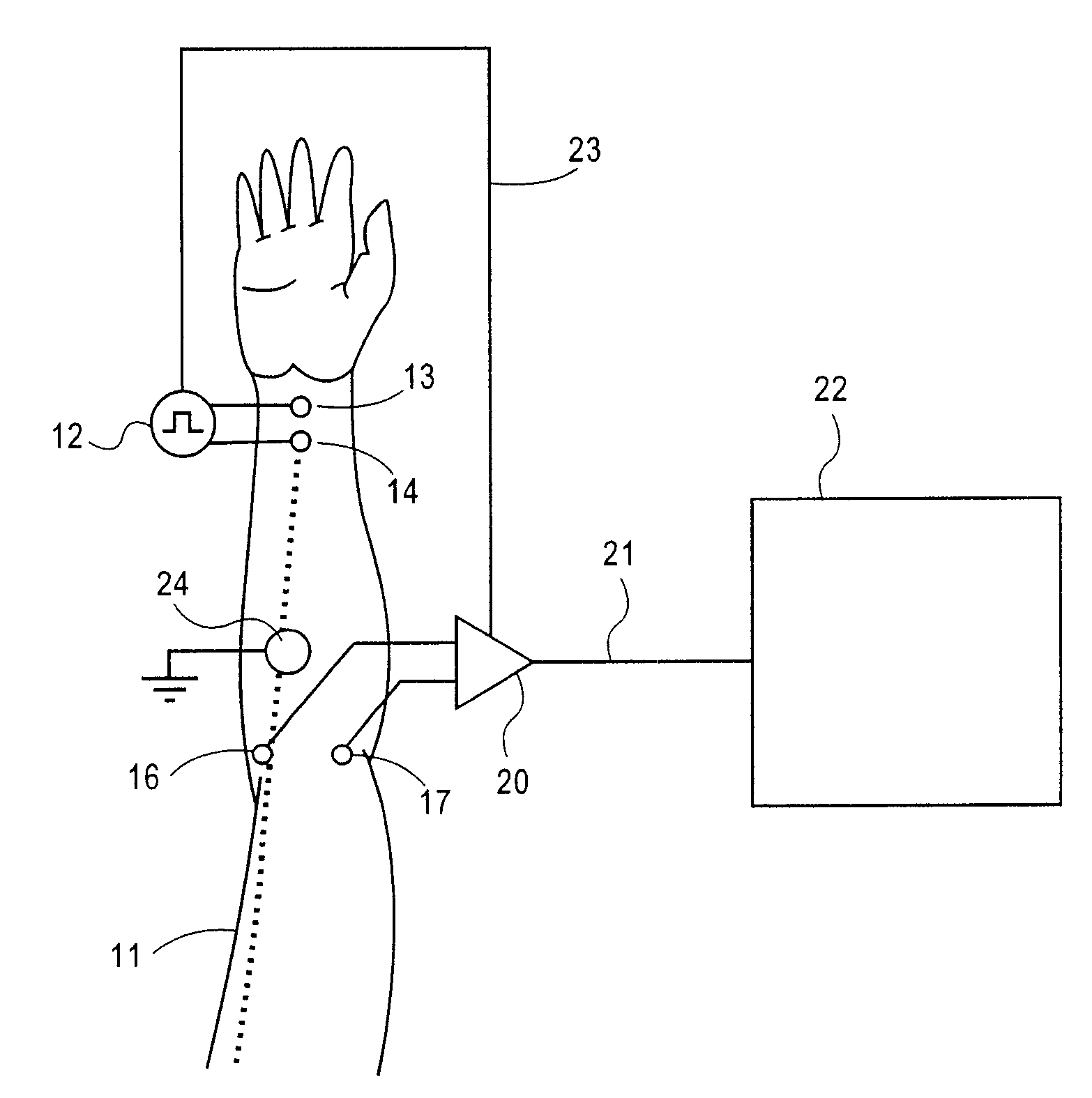Method and apparatus for stimulus artifact suppression
a stimulus and artifact technology, applied in the field of evoked potential and nerve conduction testing, can solve the problems of amplifiers recovering from saturation condition, amplifier gains are typically set very high, and significant difficulty in measuring response potentials, so as to reduce the overall gain of the amplifying apparatus and achieve high gain amplification, the effect of high gain
- Summary
- Abstract
- Description
- Claims
- Application Information
AI Technical Summary
Benefits of technology
Problems solved by technology
Method used
Image
Examples
Embodiment Construction
[0014]A pictorial view illustrating a typical application of evoked potential stimulation apparatus is shown in FIG. 1 to provide an example of the invention, arranged for measuring the response of the median nerve in a subject's arm 11. The electrical stimulus is provided from a stimulator 12 to anode and cathode stimulation electrodes 13 and 14, respectively. An example of stimulation apparatus for applying electrical stimulus pulses to a subject is described in U.S. Pat. No. 4,722,343, issued Feb. 2, 1988, the disclosure of which is incorporated herein by reference. The nerve response signal is recorded at sensing electrodes 16 and 17 which are connected to and the signals from which are received by a recording amplifier 20 in accordance with the invention, which provides its amplified output signal on a line 21 to an analyzer 22. The stimulus pulse from the stimulator 12 is supplied via a connecting line 23 to the recording amplifier 20 for use in accordance with the invention, ...
PUM
 Login to View More
Login to View More Abstract
Description
Claims
Application Information
 Login to View More
Login to View More - R&D
- Intellectual Property
- Life Sciences
- Materials
- Tech Scout
- Unparalleled Data Quality
- Higher Quality Content
- 60% Fewer Hallucinations
Browse by: Latest US Patents, China's latest patents, Technical Efficacy Thesaurus, Application Domain, Technology Topic, Popular Technical Reports.
© 2025 PatSnap. All rights reserved.Legal|Privacy policy|Modern Slavery Act Transparency Statement|Sitemap|About US| Contact US: help@patsnap.com



